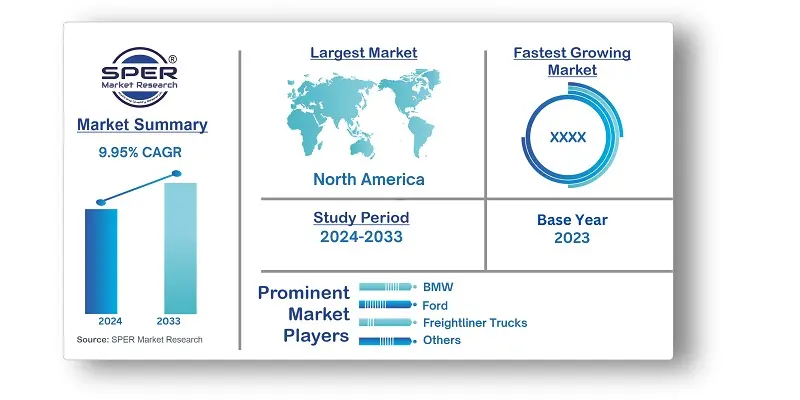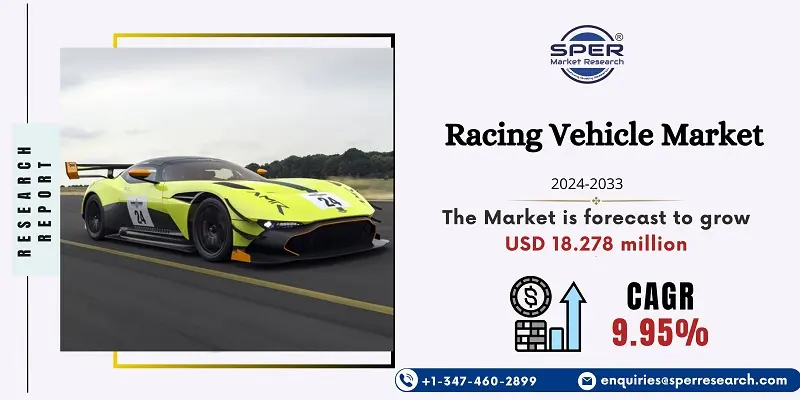
Racing Vehicle Market Growth, Size, Trends, Demand, Share, Revenue and Future Outlook
Racing Vehicle Market Size- By Type, By Application- Regional Outlook, Competitive Strategies and Segment Forecast to 2033
| Published: May-2024 | Report ID: AMIN24130 | Pages: 1 - 211 | Formats*: |
| Category : Automotive & Transportation | |||
- March 2023; Toshihiro Mibe, the chief executive officer of Honda Motor Co., is betting on new battery technology to slash costs and create electric versions of the company's smaller, more affordable cars. However, the Japanese automaker will first sell larger, costlier EVs.
- July 2023; The manufacturer plans to electrify the Macan, a small SUV, next its 718 sports vehicle, and finally its best-selling Cayenne, which will run on Porsche e-fuel.


| Report Metric | Details |
| Market size available for years | 2020-2033 |
| Base year considered | 2023 |
| Forecast period | 2024-2033 |
| Segments covered | By Type, By Application |
| Regions covered | North America, Asia-Pacific, Latin America, Middle East & Africa and Europe |
| Companies Covered | BMW, Ford, Freightliner Trucks, General Motors, Honda, Jaguar, Mercedes-Benz, KTM, Tata Motors. |
- Sim Racers and E-sports Enthusiasts
- Luxury Car Collectors
- Gearheads and DIY Racers
| By Type: |
|
| By Application: |
|
| By Region: |
|
- Global Racing Vehicle Market Size (FY’2024-FY’2033)
- Overview of Global Racing Vehicle Market
- Segmentation of Global Racing Vehicle Market By Type (Racing Cars, Racing Motorcycles, Racing Trucks, Others)
- Segmentation of Global Racing Vehicle Market By Application (F1, NASCAR, WRC, Grassroots Car Racing, Formula E, Others)
- Statistical Snap of Global Racing Vehicle Market
- Expansion Analysis of Global Racing Vehicle Market
- Problems and Obstacles in Global Racing Vehicle Market
- Competitive Landscape in the Global Racing Vehicle Market
- Impact of COVID-19 and Demonetization on Global Racing Vehicle Market
- Details on Current Investment in Global Racing Vehicle Market
- Competitive Analysis of Global Racing Vehicle Market
- Prominent Players in the Global Racing Vehicle Market
- SWOT Analysis of Global Racing Vehicle Market
- Global Racing Vehicle Market Future Outlook and Projections (FY’2024-FY’2033)
- Recommendations from Analyst
1.1. Scope of the report1.2. Market segment analysis
2.1. Research data source2.1.1. Secondary Data2.1.2. Primary Data2.1.3. SPER’s internal database2.1.4. Premium insight from KOL’s2.2. Market size estimation2.2.1. Top-down and Bottom-up approach2.3. Data triangulation
4.1. Driver, Restraint, Opportunity and Challenges analysis4.1.1. Drivers4.1.2. Restraints4.1.3. Opportunities4.1.4. Challenges4.2. COVID-19 Impacts of the Global Racing Vehicle Market.
5.1. SWOT Analysis5.1.1. Strengths5.1.2. Weaknesses5.1.3. Opportunities5.1.4. Threats5.2. PESTEL Analysis5.2.1. Political Landscape5.2.2. Economic Landscape5.2.3. Social Landscape5.2.4. Technological Landscape5.2.5. Environmental Landscape5.2.6. Legal Landscape5.3. PORTER’s Five Forces5.3.1. Bargaining power of suppliers5.3.2. Bargaining power of buyers5.3.3. Threat of Substitute5.3.4. Threat of new entrant5.3.5. Competitive rivalry5.4. Heat Map Analysis
6.1. Global Racing Vehicle Market Manufacturing Base Distribution, Sales Area, Product Type6.2. Mergers & Acquisitions, Partnerships, Product Launch, and Collaboration in Global Racing Vehicle Market
7.1. Global Racing Vehicle Market Size, Share and Forecast, By Type, 2020-20267.2. Global Racing Vehicle Market Size, Share and Forecast, By Type, 2027-20337.3. Racing Cars7.4. Racing Motorcycles7.5. Racing Trucks7.6. Others
8.1. Global Racing Vehicle Market Size, Share and Forecast, By Application, 2020-20268.2. Global Racing Vehicle Market Size, Share and Forecast, By Application, 2027-20338.3. F18.4. NASCAR8.5. WRC8.6. Grassroots Car Racing8.7. Formula E
8.8. Other
9.1. Global Racing Vehicle Market Size and Market Share
10.1. Global Racing Vehicle Market Size and Market Share By Region (2020-2026)10.2. Global Racing Vehicle Market Size and Market Share By Region (2027-2033)
10.3. Asia-Pacific10.3.1. Australia10.3.2. China10.3.3. India10.3.4. Japan10.3.5. South Korea10.3.6. Rest of Asia-Pacific10.4. Europe10.4.1. France10.4.2. Germany10.4.3. Italy10.4.4. Spain10.4.5. United Kingdom10.4.6. Rest of Europe10.5. Middle East and Africa10.5.1. Kingdom of Saudi Arabia10.5.2. United Arab Emirates10.5.3. Qatar10.5.4. South Africa10.5.5. Egypt10.5.6. Morocco10.5.7. Nigeria10.5.8. Rest of Middle-East and Africa10.6. North America10.6.1. Canada10.6.2. Mexico10.6.3. United States10.7. Latin America10.7.1. Argentina10.7.2. Brazil10.7.3. Rest of Latin America
11.1. BMW11.1.1. Company details11.1.2. Financial outlook11.1.3. Product summary11.1.4. Recent developments11.2. FORD11.2.1. Company details11.2.2. Financial outlook11.2.3. Product summary11.2.4. Recent developments11.3. FREIGHTLINER TRUCKS11.3.1. Company details11.3.2. Financial outlook11.3.3. Product summary11.3.4. Recent developments11.4. GENERAL MOTORS11.4.1. Company details11.4.2. Financial outlook11.4.3. Product summary11.4.4. Recent developments11.5. HONDA11.5.1. Company details11.5.2. Financial outlook11.5.3. Product summary11.5.4. Recent developments11.6. JAGUAR11.6.1. Company details11.6.2. Financial outlook11.6.3. Product summary11.6.4. Recent developments11.7. MCLAREN AUTOMOTIVE11.7.1. Company details11.7.2. Financial outlook11.7.3. Product summary11.7.4. Recent developments11.8. MERCEDES-BENZ11.8.1. Company details11.8.2. Financial outlook11.8.3. Product summary11.8.4. Recent developments11.9. KTM11.9.1. Company details11.9.2. Financial outlook11.9.3. Product summary11.9.4. Recent developments11.10. TATA MOTORS11.10.1. Company details11.10.2. Financial outlook11.10.3. Product summary11.10.4. Recent developments11.11. OTHERS
SPER Market Research’s methodology uses great emphasis on primary research to ensure that the market intelligence insights are up to date, reliable and accurate. Primary interviews are done with players involved in each phase of a supply chain to analyze the market forecasting. The secondary research method is used to help you fully understand how the future markets and the spending patterns look likes.
The report is based on in-depth qualitative and quantitative analysis of the Product Market. The quantitative analysis involves the application of various projection and sampling techniques. The qualitative analysis involves primary interviews, surveys, and vendor briefings. The data gathered as a result of these processes are validated through experts opinion. Our research methodology entails an ideal mixture of primary and secondary initiatives.



Frequently Asked Questions About This Report
PLACE AN ORDER
Year End Discount
Sample Report
Pre-Purchase Inquiry
NEED CUSTOMIZATION?
Request CustomizationCALL OR EMAIL US
100% Secure Payment






Related Reports
Our Global Clients
Our data-driven insights have influenced the strategy of 200+ reputed companies across the globe.




















